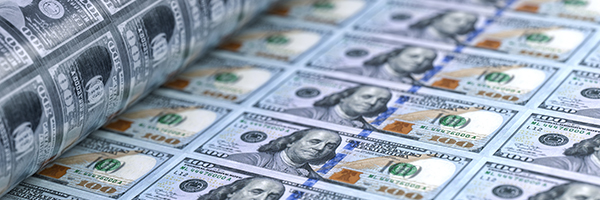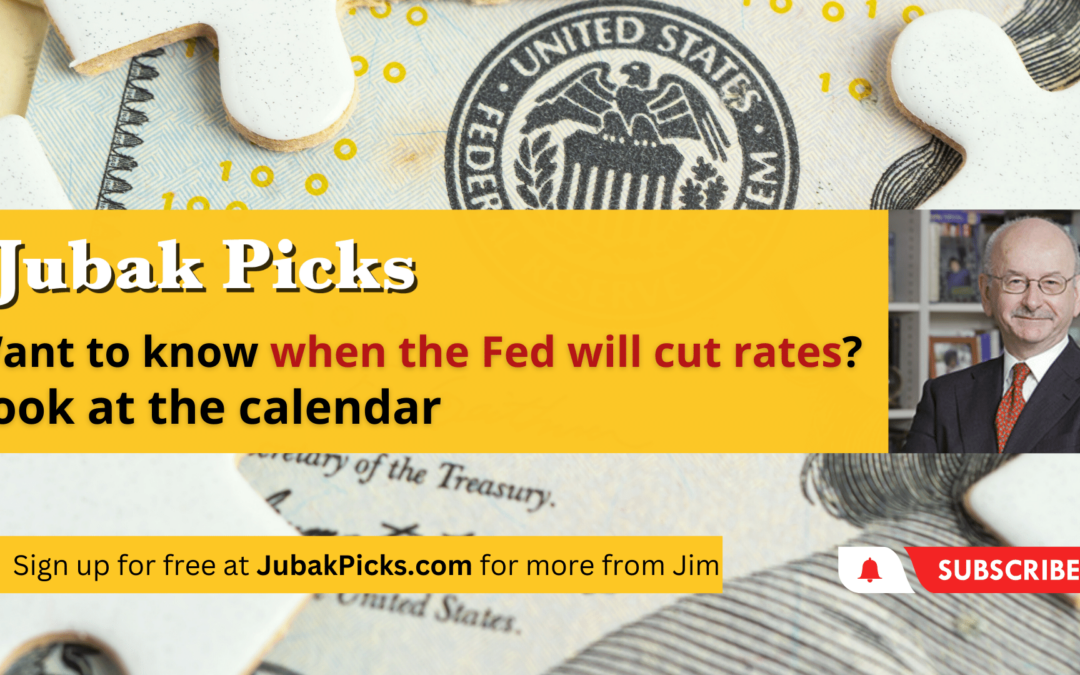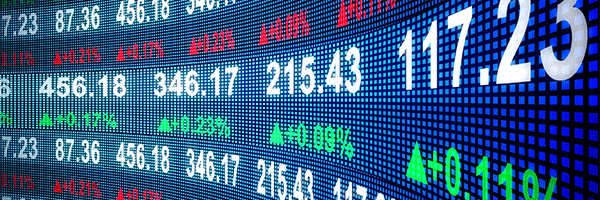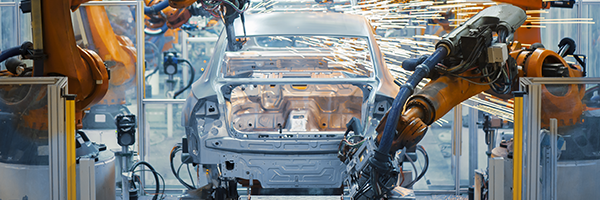
April 26, 2024 | Daily JAM, Mid Term, Morning Briefing |
Yesterday we had a report of core Personal Consumption Expenditure for March that showed core inflation ticking up to an annual rate of 3.8% from 3.7%. Core inflation, if you remember, looks at prices after excluding more volatile food and energy prices, The reasonable conclusion was that inflation was remaining stubbornly higher than the Federal Reserves % target. And that the first cut to interior rates from the Fed wouldn’t come until December, instead of July or September. Today we got the report on all-items PCE inflation.

April 25, 2024 | Daily JAM, Mid Term, Morning Briefing |
How views on interest rates have changed since the start of 2024. Then, in January, the consensus view called for as many as six interest rate cuts from the Federal Reserve in 2024 for a total of 150 basis points in cuts to the Fed’s benchmark interest rate. Today, after a dip in first quarter GDP below a 2% annual rate and an uptick in core PCE inflation, the markets are pricing in just 33 basis points in rate cuts and quite possibly no cut until the Fed’s December 18 meeting.

April 25, 2024 | Daily JAM, Morning Briefing, Short Term |
U.S. economic growth slowed in the first three months of the year, the Bureau of Economic Analysis reported today. Gross Domestic Product (GSP) grew at an annualized rate of just 1.6%. That’s a big retreat from the 3.4% annual rate in the fourth quarter of 2023. Just as important as the drop in the growth rate itself is the reason for the decline.

April 17, 2024 | Daily JAM, Videos |
Today’s video is Want to know when the Fed will cut rates? Look at the calendar. The Fed only has so many meetings left for 2024 and even fewer if you only coun those with Dot Plot updates of the Fed’s economic projections. The Fed is on the verge of a major shift in policy and the U.S. central bank almost never makes a big policty shift at a meeting without an update of its economic projections.. Early in the year, people were looking for up to five cuts, now, sentiment has shifted to one or fewer. If we get a rate cut at all, when will it be? Look at which upcoming Fed meetings include Dot Plots. The Fed doesn’t like to surprise investors and if they make a drastic change, like a shift to rate cuts, you can bet they want to do it while they’re also discussing projections for 2024 and 2025. The.CME Fedwatch Tool currently odds for the next meeting, May 1, at a 98% chance of no cut and the June meeting is now up to an 84.8% chance of no cut. The June meeting WILL have a Dot Plot and, up until recently, the finanial markets believed that meeting that would deliver the news. Because the Fed generally likes to give in-depth information during a big policy shift, it’s unlikely that the rate cut will be in July, since no dot Plot economic pdate is scheduled for that meeting. The next real chance of a rate cut, I think, is September 18, which has a Dot Plot. (There is no August Fed meeting.) The market thinks there will be a cut in September, and CME Fedwatch has the odds of no cut at that meeting at just 32.7%. A second rate cut in 2024 would have to be at the December 18 meeting, the final 2024 meeting with a Dot Plot. (The Fed doesn’t meet in Ocrober and the November meeting does include a Dot Plot update.) Without the September cut, it’s very unlikely there will be two cuts in 2024. Unless inflation data changes a lot, I doubt we’ll have two rate cuts, but we can look for one in September or December at this point.

April 10, 2024 | Daily JAM, Morning Briefing |
If, as the too hot April 10 CPI inflation argues, we’re not going to see a June 12 interest rate cut… And if investors are looking at two cuts in 2024 (at the most) instead of three… And if there’s a possibility that we won’t see the first rate cut until the November 7 Fed meeting… Then what will keep this rally from turning into a correction? Earnings look like they will have to do the job .Problem is that this quarter’s earnings look likely to disappoint. There are quarters with better earning growth forecast ahead. Will investors wait for them?

April 10, 2024 | Daily JAM, Morning Briefing, Short Term |
In March the Consumer Price Index inflation rate rose more than expected by economists for a third straight month, the Bureau of Labor Statistics reported this morning. That looks to the market today, and to me, like it takes an initial interest rate cut off the table for the Fed’s June 12 meeting. The all-items inflation rate rose by 0.4% in March from February. The 12-month all-items inflation rate rose at a 3.5% rate in March. The core CPI, the inflation rate more important to the Federal Reserve, rose 0.4% month-over-month in March. And at a 3.8% annual rate.

April 8, 2024 | Daily JAM, Morning Briefing |
Yields on the 10-year Treasury rose to the highest since November, climbing to 4.42%. That an increase in the 10-year yield of 25 basis points in the last month. The bond market looks to have given up its hope for three interest rate cuts in 2024 now to be looking now to just two moves by the Federal Reserve in 2024. Wednesday’s release of CPI inflation numbers for March will confirm or reverse that conviction

April 5, 2024 | Daily JAM |
Step 4: Build a short-term Treasury bond ladder The yield on the 10-year Treasury bond climbed another 7 basis points today, April 5. That’s a gain in yield of 23 basis points in one month. So yes, it’s time to build a bond ladder in Treasuries.

April 5, 2024 | Daily JAM, Morning Briefing |
The U.S. economy added 303,000 jobs last month. That was far more than than the 192,000 expected by economists.The unemployment rate dipped to 3.8%.
For today at least the stock market sees the report as “The glass is half full.” Yes, a stronger than expected labor market raises the odds that the Federal Reserve won’t begin its interest rate cuts at its June 12 meeting. But the strength in the economy is good for stocks. And if not June, then the Fed will cut in July, the thinking goes today.

April 3, 2024 | Daily JAM, Morning Briefing |
The Institute for Supply Management’s composite index of services fell 1.2 points to 51.4 a four-year low. The drop in the report released today, April 3, was the second month in a row. The services report came a day after the manufacturing sector report showed costs rising in the sector. Which, of course, led some investors and traders to worry that the Federal Reserve might put off the start of interest rate cuts beyond its June 12 meeting. The yield on the 10-year Treasury, which hit a new intraday high for 2024 at 4.37% yesterday, closed at 4.35% today. That’s still 17 basis points higher in a month. The relative calm today was also a result of remarks from Jerome Powell and other Fed officials that boiled down to “We told you the road to 2% inflation would be bumpy, but we haven’t seen anything in the recent data to change the direction of our policy or the timing of cuts.” A June cut, in other words, remains very much on the table.

April 1, 2024 | Daily JAM, Morning Briefing |
Could it be just two interest rate cuts in 2024 instead of three (or four as the most bullish wish)? The Institute for Supply Management’s manufacturing index showed U.S. factory activity unexpectedly expanding in March for the first time since September 2022 on a sharp rebound in production and stronger demand. Even worse, for those counting on early and often cuts from the Fed, input costs, AKA inflation, climbed.

March 22, 2024 | Daily JAM, Mid Term, Videos |
Today’s video is What Powell Said, and What the Market Heard. Jerome Powell, Chair of the Federal Reserve, tried to walk a fine line during Wednesday’s press conference. He said that while inflation is sticky; he’s still confident in a soft landing at 2.0% and that they will cut rates once they confirm that a 2.0% rate is achievable. What the market heard was “we can tolerate higher inflation for longer while still cutting rates, ” and this is backed up by the Fed’s Dot Plot economic projections . The Dot Plot lays out 2-3 cuts in 2024 even though core PCE inflation rates are expected to be at 2.6% at the end of the year–not the target of 2.0%. That 2.0% target will now not likely be reached until the end of 2026, the Fed’s own economic projections say. The market reacted to the news that they heard as “the Fed is no longer insisting on the 2.0% target and will be cutting rates this year,” by hitting its 20th all-time high for 2024. The market heard happy days are here again, and rallied.











